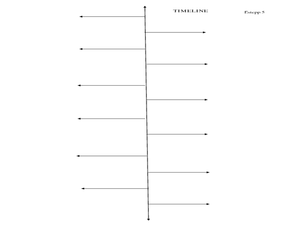Curated OER
Express Yourself
Sixth graders write to Key pals. In this description lesson, 6th graders describe a place to their key pals and the pal has to draw a pictures based off their description. They also create a Fun Facts Worksheet about their...
Curated OER
Inside-out Adaptations
Students describe sea stars adaptations and explain how these enable them to survive in different environments. In this animal adaptation instructional activity students watch a video, get into groups and create a list of...
Curated OER
Tutors & Readers Theater
Students complete literacy service learning projects. In this literacy activity, older students work with younger students to tutor them in reading and writing. They help prepare a Readers Theater for the younger students.
Curated OER
The World of Constitutions: Better Understanding the U.S. Constitution
Students examine the purpose of constitutions. In this government systems lesson, students analyze the sections of the U.S. Constitution. Students then compare the U.S. Constitution to the constitutions of other countries. Students write...
Curated OER
Feudalism
Students have tournaments in teams after learning information about The Middle Ages. In this Middle Ages lesson plan, students learn that tournaments are mock battles, but that they will have these battles by answering questions in teams...
Curated OER
Famous Hoosiers
Fourth graders make a timeline about a famous person from Indiana. In this famous Hoosiers lesson, 4th graders watch a PowerPoint presentation about David Letterman's life. They make a timeline using information from the presentation on...
Curated OER
The 1955 Flood and Its Changes
Seventh graders explore Connecticut history. In this 1955 flood lesson, 7th graders compare maps of Putnam, CT before and after the flood. Students also read eyewitness accounts in order to prepare for a debate about the Thompson Dam.
Curated OER
The War of the Worlds
Students discover the concept of media based on literature. In this War of the Worlds lesson, students read the novel The War of the Worlds by H.G. Wells and listen to the 1938 radio broadcast adaptation by Orson Welles. Students then...
Curated OER
The Ice Age
Students study the ice age and the causes of it. In this Ice Age lesson students examine why those animals became extinct and complete activity sheets.
Curated OER
Over a Barrel
Students examine oil reliance in Britain and around the world. In this oil crisis lesson plan, students discuss how oil is produced and consider the supply left in the world. Students also examine the influences of oil prices and...
Curated OER
Breaking Barriers
Students examine the context of a speech delivered by Barack Obama. In this African-American history lesson, students discuss the 15th Amendment and the American Civil Rights Movement prior to analyzing Barack Obama's speech "A More...
Curated OER
Kinetic Theory
Students describe how molecules of the different phases of matter move according to the Kinetic Theory. In this chemistry lesson, students observe and participate in teacher demos. They give real world applications of the kinetic theory.
Curated OER
J.K. Rowling
In this famous people worksheet, students read a selection about the life of J.K. Rowling, then complete a variety of comprehension activities. An answer key is included.
Curated OER
Brain and Senses
Students investigate the brain through multiple senses. In this biology lesson, students experiment with different activities involving taste, memory, touch, and sight to understand how the brain works. Students work in partners and...
Curated OER
Exploring Quadratic Graphs
Learners solve quadratic equations using graphs. In this algebra lesson, students factor quadratic equations and graph their answer. They discuss the shape of their graph based on the function.
Curated OER
A Model of a Scanning Tunneling Microscope
Ninth graders explain how a scanning tunneling microscope works. In this chemistry lesson, 9th graders construct atomic models and simulate how their images appear under the STM. They discuss the limitations of their atomic model.
Curated OER
Volcanoes and Urban Planning
Students analyze satellite image data of Volcan Villarica. In this earth science lesson, students identify dangerous areas surrounding the volcano. They propose a new safe location for the town.
Curated OER
We the Present
Pupils interview representatives from nonprofit organizations in their community. They summarize the information from their interviews and share the information with the class. They identify the impact of the organization on the community.
Curated OER
Introduction to Music of the Civil Rights Era
Students summarize the major events of the Civil Rights Movement. They examine leaders such as Martin Luther King, Jr. and Malcolm X and what they did for the movement. They also listen to music from the Civil Rights Era and their...
Curated OER
Match the Environment Group with the Correct Sector
Students identify different types of environmental organizations. They connect each organization to one of three economic sectors. They examine how each organization is different in their goals and purposes.
Curated OER
Nonprofits in our Community and World
Students examine the role and impact of nonprofit organizations within their community and prepare to interview representatives. They identify and develop questions to ask representatives of local nonprofit organizations. Students must...
Curated OER
What's the Difference?
Students compare and contrast living conditions in a different country and the United States. They use the internet to gather their information. They finally read letters from volunteers to the Peace Corps.
Curated OER
Breaking News English: Teenage Mothers Risk Premature Babies
In this English worksheet, students read "Teenage Mothers Risk Premature Babies," and then respond to 1 essay, 47 fill in the blank, 7 short answer, 20 matching, and 8 true or false questions about the selection.
Curated OER
Written Report How Music Motivates
Students examine the role of music in their lives. They listen to songs from the Civil Rights movement. They explain how music effects their thinking.

























